Embarking on an exploration of Selena Gomez’s illustrious film career unveils a trajectory marked by diversity, depth, and a distinct charm that resonates with a wide audience. As a multifaceted artist, Selena Gomez has gracefully transitioned from her roots in television to making a significant impact on the silver screen. Her filmography is a testament to her versatility and ability to connect with viewers across various genres, from animated features to poignant dramas and comedies that range from light-hearted to introspective. This article delves into the top 10 movies of Selena Gomez’s career, offering an in-depth analysis of each film’s plot, character development, thematic elements, and actors’ performances. Through examining the cultural impact and critical reception of these works, we’ll uncover the nuances of Selena Gomez’s contributions to cinema and her evolution as an actor, culminating in a reflection on her enduring legacy in Hollywood.
1.”Spring Breakers” (2012)
“Spring Breakers,” directed by Harmony Korine in 2012, is a film that has elicited a myriad of reactions and interpretations from audiences and critics alike. This provocative and visually arresting cinematic piece serves not only as a commentary on the excesses of youth culture in America but also as a significant milestone in the career of Selena Gomez. By venturing into this uncharted territory, Gomez shed her Disney-crafted image to embrace a character that is as complex as the narrative of the film itself. In delving deeper into the plot, character development, and thematic elements of “Spring Breakers,” we can appreciate the film’s nuanced exploration of freedom, consequence, and the American Dream alongside Selena Gomez’s pivotal role in this narrative landscape.
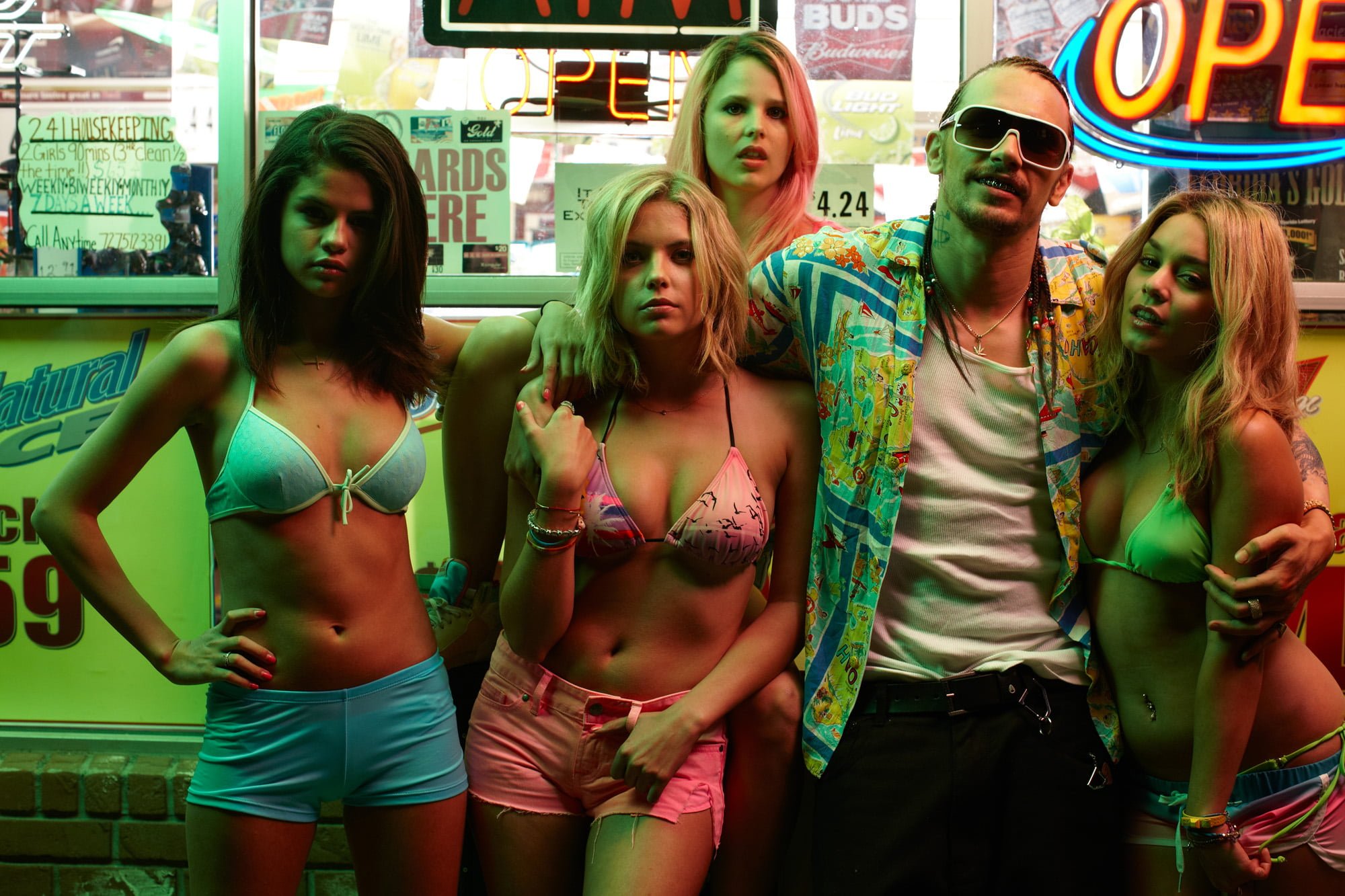
Plot and Thematic Exploration
“Spring Breakers” revolves around four college students—Faith (Selena Gomez), Candy (Vanessa Hudgens), Brit (Ashley Benson), and Cotty (Rachel Korine)—who, driven by a desire for adventure and escape, fund their spring break escapade through a robbery. This decision catapults them into a neon-soaked journey filled with crime, violence, and a dalliance with a rapper and gangster named Alien (James Franco). What starts as a quest for liberation and fun soon descends into a chaotic and harrowing experience, particularly for Selena Gomez’s character, Faith.
Faith’s character arc is emblematic of the film’s deeper thematic concerns. Raised with a strong religious background, Faith finds herself ensnared between her ingrained moral compass and the seductive promise of unrestrained freedom represented by her friends’ actions and the allure of Alien’s world. This tension highlights a critical examination of modern youth’s quest for identity and meaning in a culture that often glorifies excess and hedonism.
The film challenges its audience to reflect on the nature of freedom and its limits. Through its depiction of the characters’ spiral into crime, “Spring Breakers” poses essential questions about the consequences of pursuing freedom without boundaries. It juxtaposes the vibrant, almost dream-like quality of the spring break experience with the grim realities of the path the characters choose to follow. This duality serves as a metaphor for the broader American Dream—often idealized and pursued at all costs, yet fraught with complexities and pitfalls.
Cultural Impact and Critical Reception
Upon its release, “Spring Breakers” polarized audiences and critics, eliciting a spectrum of responses that ranged from acclaim to disdain. Some praised the film for its audacious visual style, its psychedelic blend of colors, and its hypnotic soundtrack, which together create a visceral experience that captures the film’s thematic essence. Critics lauded the film for its critique of American youth culture’s obsession with fame, materialism, and instant gratification, seeing it as a daring exposé of the darker undercurrents of these pursuits.
Conversely, others critiqued “Spring Breakers” for what they perceived as a lack of coherent message, arguing that the film’s stylistic flourishes overshadowed its narrative depth. The portrayal of violence and sexualization of young women sparked debate, with some viewers questioning whether the film critiqued or perpetuated the very issues it sought to explore.
However, Selena Gomez’s performance as Faith emerged as a universally praised element of the film. Critics and audiences alike were impressed by the depth and vulnerability Selena Gomez brought to her character, marking a significant departure from her previous roles. Her portrayal of Faith’s inner conflict and eventual disillusionment with the path she and her friends have taken was seen as a testament to Gomez’s range as an actress and her ability to tackle more mature and complex themes.
The film has since cultivated a cult following, with many appreciating its boldness, thematic richness, and Korine’s unique vision. Discussions about “Spring Breakers” have evolved, with more viewers recognizing its commentary on the commodification of youth, the elusive nature of the American Dream, and the societal pressures that drive the pursuit of pleasure and freedom at any cost.
Legacy and Reflection
“Spring Breakers” stands as a critical juncture in Selena Gomez‘s acting career, showcasing her willingness to explore and embody characters that diverge significantly from her established public persona. The film’s exploration of freedom, morality, and the consequences of our choices resonates with broader cultural and societal concerns, making it a pertinent commentary on contemporary life.
Through its divisive reception, “Spring Breakers” has stimulated ongoing discussions about the nature of art, the role of critique, and the ways in which films can reflect, critique, and even shape societal values and behaviors. It challenges viewers to confront their preconceptions about youth and morality in the modern world, inviting a deeper engagement with the film’s complex themes.

In examining “Spring Breakers” and Selena Gomez’s role within it, we gain insight into the transformative power of cinema to question, provoke, and illuminate the human condition. Gomez’s performance is a pivotal element of the film’s impact, offering a nuanced portrayal that enriches the narrative and invites viewers to reflect on the intersections of innocence, freedom, and the darker sides of the American Dream. As such, “Spring Breakers” remains a significant work in the landscape of American cinema and in the career of Selena Gomez, embodying the potential of film to challenge, entertain, and inspire.
2.”Hotel Transylvania” Series (2012-2021)
The “Hotel Transylvania” series, spanning from 2012 to 2021, represents a significant milestone in family entertainment, blending humor, heart, and a touch of macabre in a way that has captivated audiences worldwide. At the heart of this animated saga is Mavis, voiced by Selena Gomez, whose character development over the course of the series not only provides a narrative backbone but also reflects Gomez’s own maturation as a performer. This section delves into the plot dynamics, thematic exploration, and the broader cultural resonance of the “Hotel Transylvania” series, underscoring its impact on audiences and critics alike, with a particular focus on Selena Gomez’s contribution to its success.
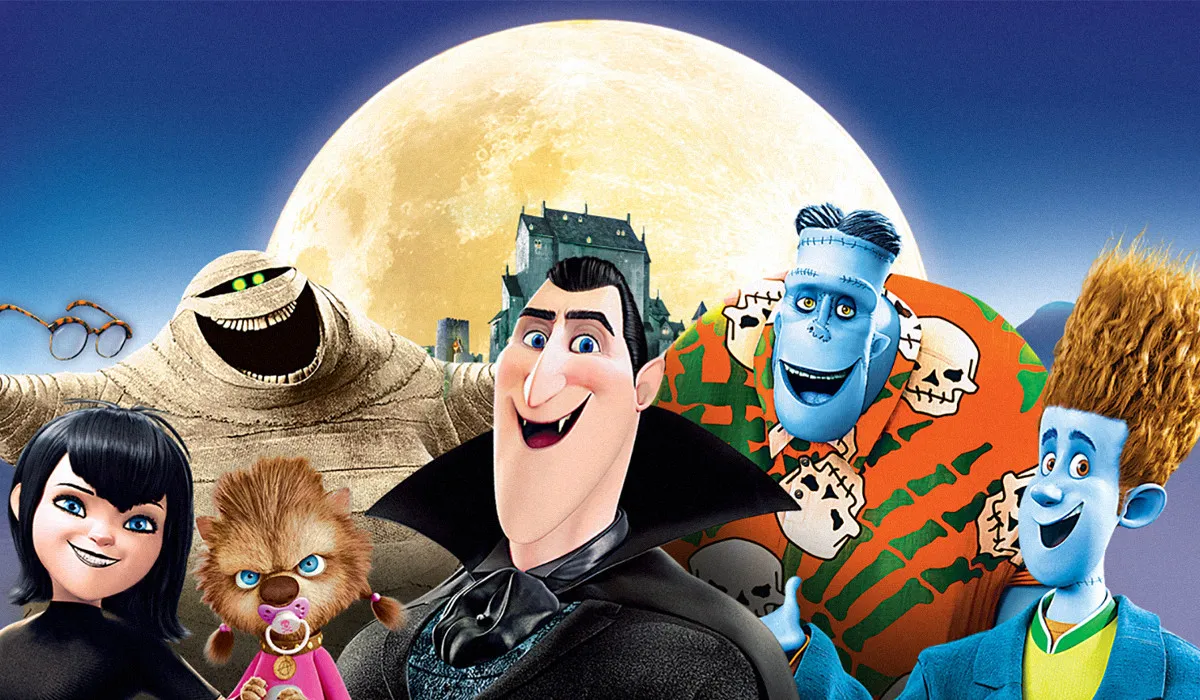
Plot Dynamics and Thematic Exploration
The “Hotel Transylvania” series begins with its titular hotel, a sanctuary for monsters from the human world’s prejudices, run by Dracula (voiced by Adam Sandler). Mavis, Dracula’s teenage daughter, emerges as a curious, spirited vampire who longs to explore the world beyond the hotel’s enchanted walls. Over the series, Mavis evolves from a sheltered girl into a confident, worldly woman, navigating life’s complexities, love, and motherhood. This progression mirrors the thematic essence of the series: the journey of understanding and acceptance, both within family units and in the wider community.
The series adeptly tackles themes of family dynamics, the fear of the unknown, and the bridging of cultural divides. Mavis’s relationship with her father, Dracula, is particularly poignant, showcasing the universal challenges of parent-child relationships as they navigate the tension between protection and independence. Additionally, Mavis’s romance with Johnny, a human, introduces a compelling narrative on the power of love to transcend differences, promoting a message of tolerance and inclusivity.
Selena Gomez’s portrayal of Mavis adds depth to these themes, her voice acting imbuing the character with a relatable warmth and complexity. Through Mavis, Selena Gomez explores the nuances of growing up, the yearning for independence, and the strength found in kindness and understanding. Her performance is a testament to her growth as an actor, demonstrating her versatility and ability to connect with audiences on an emotional level beyond the constraints of live-action roles.
Cultural Impact and Critical Reception
The “Hotel Transylvania” series has been a commercial juggernaut, appealing to both children and adults with its blend of humor, heart, and positive messages. Its success lies not only in its entertainment value but also in its ability to engage with themes of acceptance and diversity in a manner accessible to a young audience. The series encourages viewers to embrace their differences and the importance of understanding others, a message that has resonated strongly in today’s globalized and often divided world.
Critics have consistently praised the series for its creative reinterpretation of classic monsters, infusing them with personality and humor, thereby demystifying the concept of the “monster” and presenting it in a more relatable and less frightening light. This creative choice not only appeals to the imagination of younger viewers but also provides a platform for discussing themes of otherness and acceptance.
Selena Gomez’s role in the series has been widely applauded, with many critics highlighting her performance as a key factor in the franchise’s success. Her ability to convey Mavis’s emotional depth and growth throughout the series has been praised as a demonstration of her range and talent in voice acting. Selena Gomez’s involvement has also been credited with attracting a wider audience to the series, drawing in fans of her music and acting work, thereby broadening the franchise’s appeal.
Legacy and Reflection
The “Hotel Transylvania” series stands as a landmark in animated cinema, celebrated for its innovative take on monster lore, its engaging exploration of universal themes, and its appeal across age groups. It has left an indelible mark on family entertainment, setting a high standard for animated films that seek to entertain while imparting valuable life lessons.
Selena Gomez’s contribution to the series has been instrumental in its success. Through her portrayal of Mavis, Selena Gomez has demonstrated the power of voice acting to bring animated characters to life, providing them with emotional depth and relatability. Her journey with Mavis parallels her own evolution as an artist, showcasing her versatility and depth as an actor.
In reflecting on the “Hotel Transylvania” series, it’s clear that its legacy extends beyond its commercial achievements. It has contributed to important conversations about diversity, acceptance, and the power of love and understanding to overcome differences. Through its memorable characters and heartwarming narratives, the series has touched the hearts of audiences around the world, leaving a lasting impact on the landscape of animated film.

As for Selena Gomez, her work in the “Hotel Transylvania” series highlights her as a multifaceted talent in Hollywood, capable of leaving a significant mark not only through her music and live-action performances but also in the realm of animation. Her role as Mavis will be remembered as a pivotal point in her career, illustrating her growth as an actor and her ability to connect with audiences across different mediums. The “Hotel Transylvania” series, with its blend of humor, heart, and a message of acceptance, stands as a testament to the enduring power of storytelling to bridge divides and bring people together, a legacy that Gomez has played a crucial role in shaping.
3.”The Dead Don’t Die” (2019)
“The Dead Don’t Die,” directed by the venerable Jim Jarmusch in 2019, stands out as a distinctive entry in the zombie genre, offering a mix of deadpan humor, societal commentary, and a contemplative look at humanity’s end. In this unconventional zombie comedy, Selena Gomez steps into the role of Zoe, a character that allows her to stretch her comedic talents within the framework of a film that is as much a reflection on contemporary society as it is an entertaining horror-comedy. This exploration will delve into the intricacies of the plot and thematic underpinnings of “The Dead Don’t Die,” the cultural resonance and critical reception of the film, and the significance of Gomez’s performance within this cinematic tapestry.
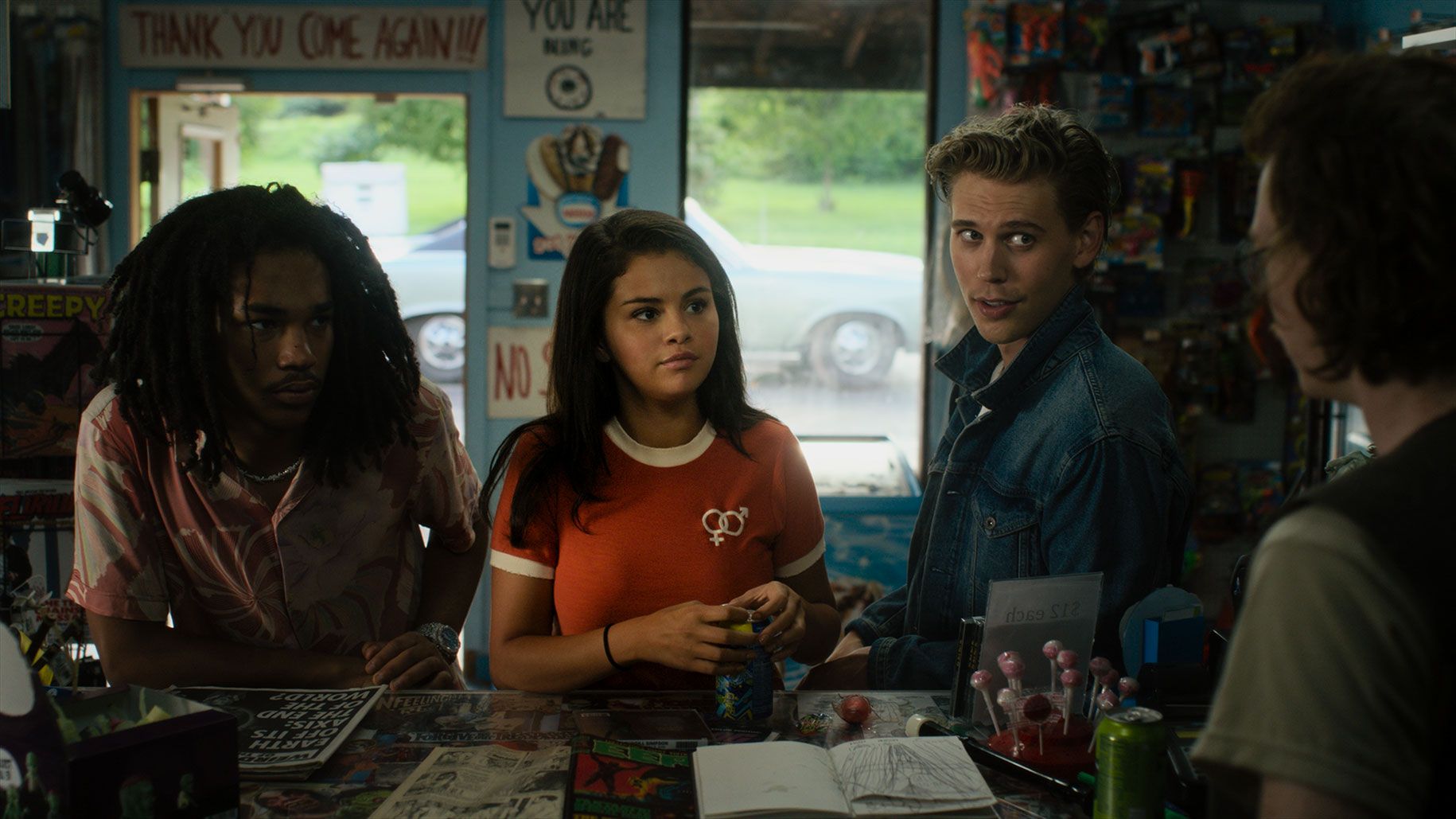
Plot and Thematic Analysis
“The Dead Don’t Die” unfolds in the sleepy small town of Centerville, where the dead begin to rise from their graves due to polar fracking that has knocked the Earth off its axis. The film employs a star-studded ensemble cast, including Bill Murray, Adam Driver, Tilda Swinton, and Selena Gomez, among others. Gomez’s character, Zoe, a “hip, young traveler,” finds herself in Centerville amidst the unfolding apocalypse, offering a youthful counterpoint to the town’s mostly older, stoic residents.
Gomez’s performance is nuanced, blending humor with a reflective quality that mirrors the film’s overarching themes. Zoe’s encounters with the undead serve as a vehicle for exploring Jarmusch’s satirical critique of modern society’s numbness to impending catastrophe—be it environmental, political, or societal. The film’s use of zombies, a common metaphor for consumerism and mindless conformity, is leveraged to comment on humanity’s collective denial and inaction in the face of clear and present dangers.
Cultural Impact and Critical Reception
Upon its release, “The Dead Don’t Die” garnered a mixed reception from critics and audiences alike. Its deliberate pacing, deadpan humor, and understated approach to the zombie apocalypse divided viewers. However, many praised the film for its originality, wit, and the way it skewered societal complacency and the trivialities that preoccupy public consciousness even as the world teeters on the brink of disaster.
Critically, the film was lauded for its eclectic cast, with many noting the performances of the actors as highlights in a narrative that eschews traditional zombie genre conventions for something more meditative and ironically detached. Selena Gomez’s portrayal of Zoe received specific praise for adding a layer of charm and depth to the ensemble. Critics acknowledged her ability to stand out in a cast of heavyweights, showcasing her versatility and the subtle emotional resonance she brought to her character. Her performance was seen as emblematic of the film’s broader commentary on youth and society’s fascination with the ephemeral, set against the backdrop of an existential threat.
The film’s unique blend of humor and horror, combined with its social and environmental commentary, sparked conversations about the role of genre cinema in addressing contemporary issues. “The Dead Don’t Die” uses its platform to highlight the absurdity of modern life’s distractions and the pervasive sense of apathy that characterizes society’s response to crises, making it a timely piece of cinematic satire.
Gomez’s Contribution and Performance Significance
In a film that deftly balances comedy with horror and satire with genuine moments of introspection, Gomez’s role as Zoe offers a crucial perspective on the narrative’s exploration of youth and societal inertia. Her performance embodies the film’s critique of cultural shallowness, providing a face to the younger generation caught in the throes of a world beset by challenges both mundane and extraordinary. Through Zoe, Gomez conveys a sense of bewilderment and ironic detachment that resonates with the viewer, amplifying the film’s thematic concerns.
Her participation in “The Dead Don’t Die” signifies a bold choice in her career trajectory, choosing roles that challenge her and allow her to explore different facets of her acting prowess. Gomez’s ability to navigate the complexities of her character within the film’s satirical and often bleak landscape attests to her growth as an actress and her willingness to take on roles that push her beyond the confines of her earlier work.
Legacy and Reflection “The Dead Don’t”
Die” occupies a unique space in the zombie genre and in the broader landscape of contemporary cinema, blending the comedic with the macabre to offer a reflective take on society’s collective ennui in the face of existential threats. Its reception, while mixed, underscores the film’s ability to provoke thought and discussion, challenging audiences to consider their own responses to the societal and environmental issues it lampoons.
Selena Gomez’s performance in the film is a microcosm of the larger narrative Jarmusch seeks to tell—one that grapples with themes of disconnection, apathy, and the human capacity for denial in the face of impending doom. By stepping into the role of Zoe, Gomez demonstrates not only her versatility as an actress but also her commitment to projects that offer something more than entertainment; they provoke, question, and invite reflection.
In the years since its release, “The Dead Don’t Die” has continued to elicit discussions about its thematic depth and the performances that bring its satirical commentary to life. Gomez’s portrayal of Zoe stands out as a poignant reminder of the potential for youth to be both a symbol of hope and a casualty of societal inertia. Her role in this ensemble cast highlights her ability to convey complexity and depth, contributing significantly to the film’s exploration of the zeitgeist.
The film, with its slow-burn humor and existential musings, offers a lens through which to examine the absurdities of modern life and the often complacent reactions to challenges that require urgent attention. It serves as a canvas for exploring the nuances of human behavior in the face of crisis, making it a poignant commentary on the times in which it was released.
“The Dead Don’t Die” thus stands as a testament to the power of cinema to reflect and critique societal trends, offering a space for contemplation amidst the chaos of the modern world. Gomez’s participation in this cinematic endeavor not only enriched the film but also marked an important step in her evolution as an artist, willing to explore and engage with the complexities of the human condition through her craft.

As time passes, the film’s cultural impact and critical reception continue to foster debates about its place within the genre and its commentary on contemporary issues. Gomez’s role as Zoe will remain a significant point of reference in discussions about her career and her capacity for nuanced performance, underscoring her versatility and depth as an actress. “The Dead Don’t Die” endures as a compelling piece of cinema that challenges viewers to look beyond the surface humor and horror to engage with the deeper societal critiques it presents, with Gomez’s performance serving as a bridge between the narrative’s satirical edge and its emotional core.
Monte Carlo,” released in 2011, is a film that skillfully combines the elements of romantic comedy with the journey of self-discovery, wrapped in the glamour of a European adventure. Starring Selena Gomez in a challenging dual role, the movie not only showcases her versatility as an actress but also delivers a story that resonates with audiences seeking both escapism and a narrative about personal growth. In this detailed exploration, we will delve into the plot nuances and thematic richness of “Monte Carlo,” assess its cultural impact and examine the critical reception that has contributed to its enduring appeal, especially in the context of Gomez’s career trajectory.
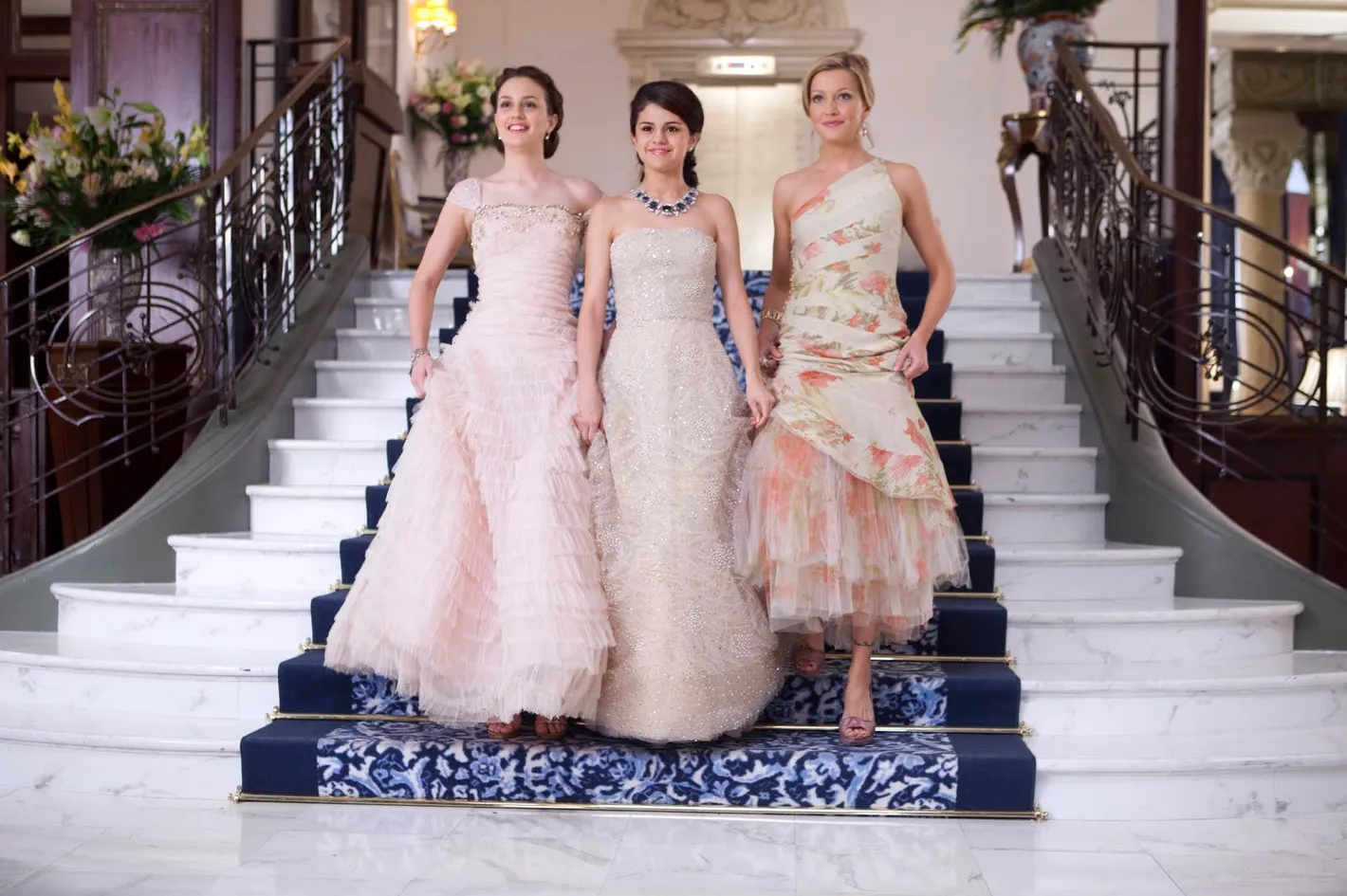
Plot and Thematic Exploration
“Monte Carlo” follows the story of Grace (Selena Gomez), a young woman from Texas, who, along with her best friend Emma (Katie Cassidy) and stepsister Meg (Leighton Meester), embarks on a dream vacation to Paris. The trip takes an unexpected turn when Grace is mistaken for a wealthy British heiress, Cordelia Winthrop Scott, also portrayed by Gomez. Seizing the opportunity, Grace and her companions are whisked away to Monte Carlo, where they experience luxury and adventure while navigating romantic entanglements and the challenges posed by their deception.
The dual role of Grace and Cordelia allows Gomez to display a broad range of emotions and comedic timing as she embodies two starkly different characters: the down-to-earth, kind-hearted Grace and the aloof, entitled Cordelia. This contrast serves as a vehicle for exploring themes of identity, self-discovery, and the realization that true happiness and fulfillment come from being authentic to oneself. The film also touches on the importance of friendship, family, and the courage to pursue one’s dreams, even when faced with daunting obstacles.
Cultural Impact and Critical Reception
While “Monte Carlo” received mixed reviews from critics, who often pointed to its predictability and the formulaic nature of its plot, the film found a receptive audience among fans of romantic comedies and admirers of Gomez. Critics acknowledged the movie’s appeal to its target demographic, praising its picturesque European settings, the charm and chemistry of its leads, and the fairy-tale-like quality of its narrative.
Selena Gomez’s performance, in particular, received accolades for her ability to navigate the complexities of playing two distinct roles. Critics and audiences alike noted the ease with which she switched between the grounded, relatable Grace and the snobbish, detached Cordelia, highlighting her growth as an actress and her capacity to carry a film’s comedic and dramatic weight. “Monte Carlo” thus played a significant role in establishing Gomez as a leading lady in romantic comedies, demonstrating her appeal beyond her established Disney Channel fan base.
The film’s cultural impact extends beyond its immediate reception, contributing to a broader conversation about the genre of romantic comedies aimed at teens and young adults. “Monte Carlo” embodies the escapism and wish fulfillment that are hallmarks of the genre while also engaging with themes of self-discovery and empowerment. It has inspired viewers to reflect on their own journeys toward finding their identity and pursuing their dreams, underscored by the universal appeal of adventure and the search for authenticity.
Gomez’s Contribution and the Legacy of “Monte Carlo”
Selena Gomez’s contributions to “Monte Carlo” are central to its success and enduring appeal. Through her portrayal of Grace and Cordelia, Gomez explores the dichotomy between appearance and reality, the value of genuine connections, and the journey toward self-acceptance. Her performance resonates with audiences because it encapsulates the highs and lows of growing up, the excitement of new experiences, and the realization that true self-worth comes from within.
Moreover, “Monte Carlo” highlights Gomez’s versatility as an actress and her ability to transition from television to film. By taking on a project that challenged her to step into dual roles, Gomez demonstrated her commitment to evolving as an artist and expanding her range. This choice has paved the way for her subsequent roles and projects, each reflecting her growth and exploration of different facets of her talent.
The legacy of “Monte Carlo” within the romantic comedy genre and Gomez’s filmography is marked by its celebration of adventure, the transformative power of travel, and the quest for authenticity. It stands as a testament to the enduring appeal of stories that, despite their fairy-tale trappings, speak to universal experiences and emotions. The film encourages viewers to dream big, embrace their true selves, and recognize the importance of love and friendship in the journey of life.

In retrospect, “Monte Carlo” serves not only as a milestone in Selena Gomez’s career but also as a reminder of the timeless appeal of romantic comedies that blend humor, heart, and a sense of adventure. Its cultural impact and critical reception underscore the film’s role in shaping Gomez’s trajectory as an actress and its place in the pantheon of films that continue to inspire and entertain audiences seeking both escapism and a reflection on the journey toward self-discovery. Through “Monte Carlo,” Gomez has left an indelible mark on the genre, affirming her status as a talented actress capable of bringing depth and charm to her roles.
5.”Another Cinderella Story” (2008)
“Another Cinderella Story,” released in 2008, is a vibrant, dance-filled modern adaptation of the classic Cinderella narrative, starring Selena Gomez as Mary Santiago. This film reimagines the timeless tale within the context of contemporary high school life, integrating elements of music, dance, and teen romance.
Through its updated storyline and engaging performances, particularly from Gomez, “Another Cinderella Story” offers a fresh take on the well-loved story while exploring themes of ambition, perseverance, and the pursuit of dreams. This analysis will delve into the plot and thematic exploration of the film, assess its cultural impact and critical reception and consider the significance of Gomez’s role in both the movie and her broader career.
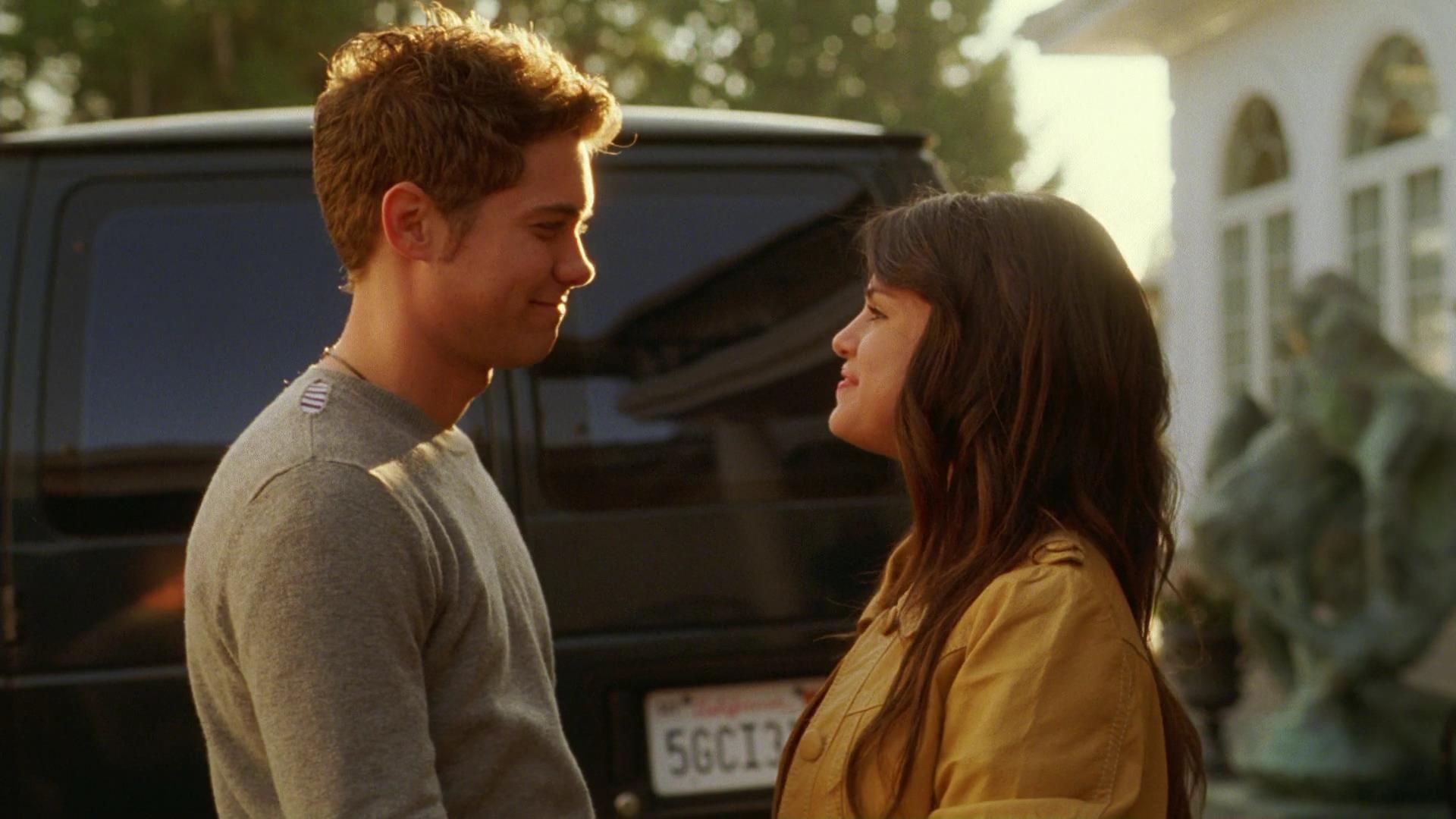
Plot and Thematic Exploration
In “Another Cinderella Story,” Mary Santiago dreams of a career in dance while navigating the challenges of her life as an adopted daughter of a has-been pop star, performing menial chores for her domineering guardian and two step-siblings. Her life takes a dramatic turn when she dances with the school’s prince charming, pop star Joey Parker (Drew Seeley), at a masked ball. However, in her rush to return to her responsibilities, she leaves behind her Zune, setting off on Joey’s quest to find the mysterious dancer.
Selena Gomez’s portrayal of Mary Santiago is both compelling and relatable. She brings a modern sensibility to the character, embodying the determination and resilience required to pursue one’s dreams against all odds. The film’s emphasis on perseverance and ambition resonates deeply with Gomez’s own journey in the entertainment industry, from a child actress to a global superstar. Through Mary, Gomez explores the challenges of staying true to one’s dreams in the face of adversity, a theme that echoes the Cinderella story’s essence while inspiring a new generation to chase their aspirations.
Cultural Impact and Critical Reception
“Another Cinderella Story” struck a chord with young audiences upon its release, captivating viewers with its engaging mix of dance, music, and romance. The film’s modern twist on the Cinderella tale, combined with its upbeat soundtrack and choreography, appealed to teens and tweens, making it a staple in the genre of teen musicals. Its success contributed to the revival of interest in dance-centric storytelling in the late 2000s and early 2010s, inspiring similar productions that blend fairy tale elements with contemporary teen experiences.
While the film’s plot was criticized by some for its predictability, Gomez’s performance received widespread praise for its sincerity, charm, and the depth she brought to the role of Mary. Critics acknowledged the film as a significant stepping stone in Gomez’s career, showcasing her versatility as an actress and a dancer. Her portrayal of Mary Santiago not only solidified her status as a role model for young viewers but also highlighted her ability to carry a film as its lead, further establishing her as a multifaceted talent in Hollywood.
The film’s themes of perseverance in the face of adversity and the importance of following one’s dreams have made it an enduring favorite among audiences. “Another Cinderella Story” serves as an inspirational tale that encourages viewers to believe in themselves and their abilities, underscoring the power of hard work and determination in achieving one’s goals.
Gomez’s Contribution and the Legacy of “Another Cinderella Story”
Selena Gomez’s contribution to “Another Cinderella Story” extends beyond her role as Mary Santiago. Through her performance, Gomez breathed new life into the Cinderella narrative, making it relevant and relatable to a contemporary audience. Her depiction of Mary as a strong, determined young woman who overcomes obstacles to realize her dreams resonates with viewers, mirroring the real-life challenges faced by many young people today.
The film’s impact on Gomez’s career cannot be overstated. It showcased her talents not only as an actress but also as a singer and dancer, paving the way for her future projects in both music and film. “Another Cinderella Story” marked an important moment in Gomez’s transition from child star to leading lady, demonstrating her ability to connect with audiences and carry a film on her shoulders.
In the years since its release, “Another Cinderella Story” has maintained its popularity, thanks in part to Gomez’s enduring appeal and the timeless quality of the Cinderella tale. The film continues to inspire young viewers to pursue their passions and to believe in the possibility of achieving their dreams, regardless of the obstacles they may face.

“Another Cinderella Story” stands as a testament to the enduring appeal of fairy tales when reimagined for a new generation. Through its modern retelling of the Cinderella story, it speaks to the universal desire for fulfillment and happiness, making it a significant entry into the genre of teen musicals. Selena Gomez’s performance as Mary Santiago remains a highlight of her early career, showcasing her range as an actress and her ability to inspire audiences with her portrayal of resilience, ambition, and the pursuit of dreams. Through this film, Gomez has left an indelible mark on the landscape of contemporary fairy tale adaptations, embodying the spirit of perseverance and hope that defines the Cinderella story.
6.”Princess Protection Program” (2009)
“Princess Protection Program,” a Disney Channel Original Movie released in 2009, is a compelling narrative that weaves together themes of friendship, identity, and cultural exchange through the engaging performances of Selena Gomez and Demi Lovato. This film, set against the backdrop of a high school in Louisiana, not only entertains but also delivers powerful messages about acceptance and the strength of bonds forged in unlikely circumstances. In exploring the plot and thematic underpinnings of the “Princess Protection Program,” assessing its cultural impact and critical reception, and reflecting on the significance of Gomez’s role, we can appreciate the film’s enduring appeal and its contribution to the landscape of teen cinema.
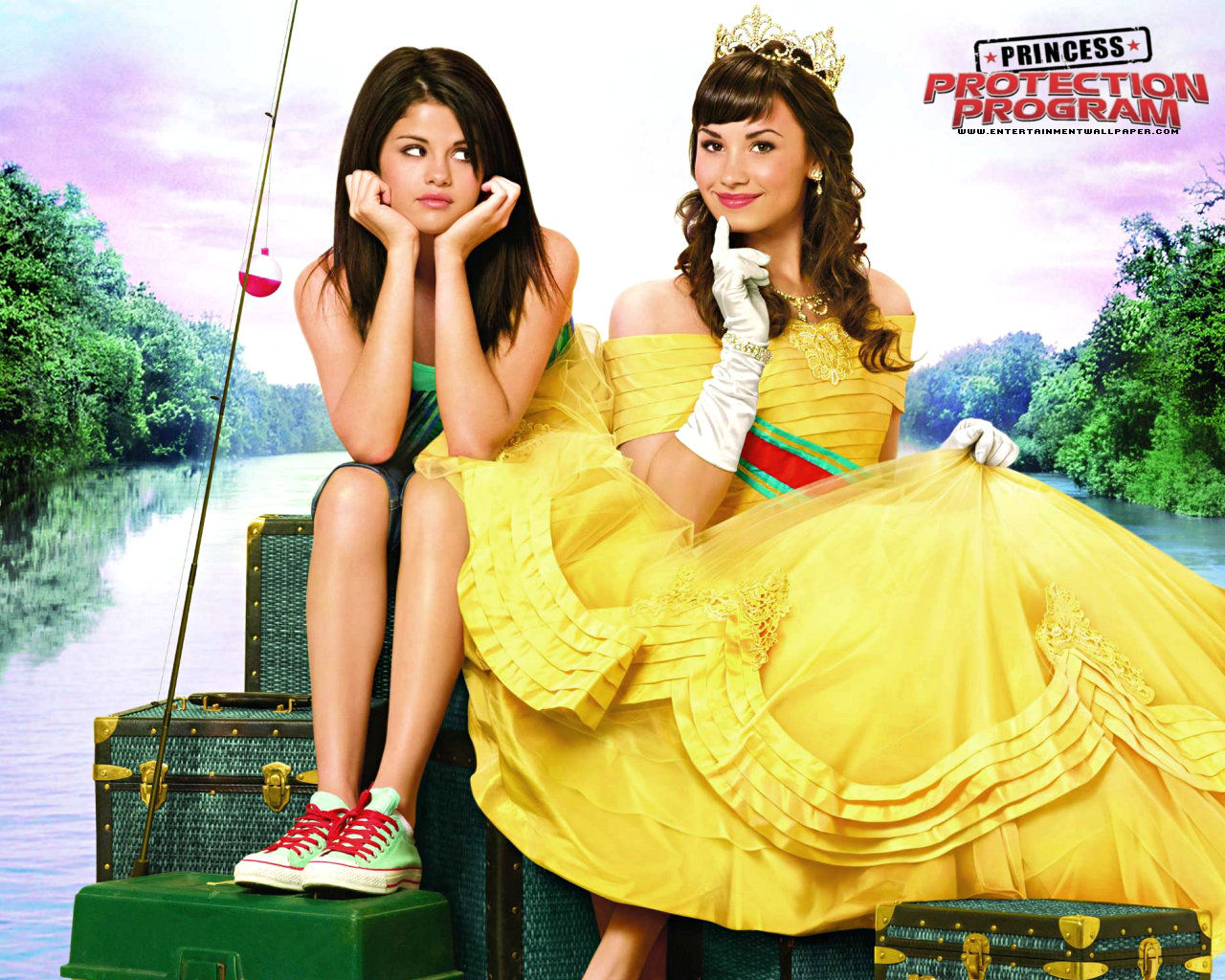
Plot and Thematic Exploration
“Princess Protection Program” introduces us to Carter (Selena Gomez), a tomboyish, down-to-earth high school student whose life takes an unexpected turn when her father, an agent of the secretive Princess Protection Program, brings home Rosalinda (Demi Lovato), a princess in hiding from a coup in her fictional home country. As Rosalinda assumes the identity of Rosie, a typical American teenager, she and Carter embark on a journey of mutual discovery, learning from each other’s vastly different experiences and forming a deep, unbreakable bond.
The film adeptly navigates themes of friendship, identity, and the clash of cultures, presenting these concepts in a manner that resonates with its young audience. Through Carter and Rosie’s evolving relationship, the “Princess Protection Program” highlights the importance of empathy, understanding, and the ability to see beyond surface-level differences. Their journey underscores the film’s central message: true friendship and compassion can transcend cultural barriers and social divides.
Selena Gomez’s portrayal of Carter is particularly noteworthy for its depth and nuance. Gomez brings a relatable authenticity to the character, embodying the film’s themes of empowerment and resilience. Her performance, characterized by its emotional depth, showcases Gomez’s capacity to connect with her audience on a personal level, making Carter’s journey from skepticism to acceptance and eventual empowerment a compelling narrative arc.
Cultural Impact and Critical Reception
Upon its release, “Princess Protection Program” was met with positive reception from its target demographic, earning praise for its uplifting message and the dynamic between its leads. The film struck a chord with viewers, particularly young girls, for its focus on empowerment, the value of true friendship, and the idea that anyone, regardless of background, can make a difference.
The chemistry between Selena Gomez and Demi Lovato was frequently highlighted by critics and audiences alike as a key strength of the film. Their real-life friendship translated on screen, adding a layer of authenticity to their characters’ relationship that enhanced the film’s overall impact. This genuine connection served to reinforce the film’s messages, making it a relatable and inspiring tale for its viewers.
“Princess Protection Program” also contributed to the ongoing conversation about gender roles and stereotypes in media targeted at younger audiences. By featuring strong, independent female leads who learn from each other and grow together, the film offers a progressive narrative that challenges traditional notions of femininity and royalty. It promotes a vision of empowerment that is inclusive and accessible to all, regardless of their social or cultural background.
Gomez’s Contribution and the Legacy of “Princess Protection Program”
Selena Gomez’s role in the “Princess Protection Program” marks a significant moment in her acting career, showcasing her versatility as an actress and her ability to carry a film that delves into complex themes of identity and cultural exchange. Through her portrayal of Carter, Gomez demonstrates an understanding of the film’s deeper messages, delivering a performance that is both grounded and inspiring.
The film’s legacy, bolstered by Gomez’s performance, lies in its ability to entertain while also imparting valuable lessons about acceptance, the power of friendship, and the importance of standing up for oneself and others. “Princess Protection Program” remains a beloved Disney Channel Original Movie, remembered for its positive impact on its audience and its contribution to the discourse on empowerment and diversity in youth-oriented media.

In reflecting on the “Princess Protection Program,” it becomes clear that the film’s enduring appeal is due in no small part to the performances of its leads, particularly Selena Gomez, and the timeless relevance of its themes. By blending entertainment with a message of empowerment and compassion, the film continues to inspire and resonate with new generations of viewers, serving as a testament to the lasting impact of thoughtful, inclusive storytelling in children’s and teen cinema. Through her role in the “Princess Protection Program,” Gomez has left an indelible mark on the genre, highlighting her talent and commitment to projects that uplift and inspire.
7.”Ramona and Beezus” (2010)
“Ramona and Beezus,” a film adaptation of Beverly Cleary’s cherished children’s books, released in 2010, beautifully translates the essence of childhood and the complexities of family life onto the silver screen. Starring Selena Gomez as Beatrice “Beezus” Quimby, the film delves into the dynamics of sisterhood through the lens of the Quimby family, presenting a narrative that is both heartwarming and insightful. Through an analysis of the plot, thematic elements, and the performances, especially that of Gomez, we can understand the film’s impact on its audience and its place within the larger context of children’s literature adaptations.

Plot and Thematic Exploration
“Ramona and Beezus” centers around the misadventures of the imaginative and spirited Ramona Quimby and her relationship with her older sister, Beezus. The film navigates through the trials and joys of growing up, as Ramona’s antics often lead to trouble, testing the patience and understanding of her family, particularly Beezus. Despite the challenges, the bond between the sisters strengthens, highlighting themes of unconditional love, resilience, and the importance of family support during times of hardship.
Selena Gomez’s portrayal of Beezus offers a nuanced view of sibling relationships, showcasing the character’s transition from annoyance to admiration for her younger sister’s unbridled spirit. Gomez’s performance is notable for its depth and emotional resonance, effectively conveying the frustrations and joys inherent in growing up alongside a uniquely challenging sibling. Her role as Beezus is pivotal in grounding the film, providing a relatable figure for older siblings who navigate the delicate balance between responsibility and affection in their relationships with younger family members.
Cultural Impact and Critical Reception
“Ramona and Beezus” was met with positive reception from both audiences and critics alike, praised for its faithful adaptation of Beverly Cleary’s beloved series. The film succeeded in bridging generations, appealing to adults who grew up with the books while introducing the timeless characters to a new generation of young readers. Its success lies in its ability to capture the universal experiences of childhood and family life, making it a relatable and comforting watch for viewers of all ages.
Critics particularly commended Gomez’s performance, recognizing her ability to bring a sense of realism and warmth to the character of Beezus. Her portrayal was seen as a testament to her growing versatility as an actress, capable of handling roles that require a delicate balance of humor and depth. Gomez’s Beezus served as the emotional anchor of the film, enriching the narrative with her portrayal of sisterly love and the complexities of maturation.
Gomez’s Contribution and the Legacy of “Ramona and Beezus”
Selena Gomez’s role in “Ramona and Beezus” marks a significant chapter in her career, showcasing her talent beyond the realms of music and television. Through her character, Gomez explores the nuances of sibling dynamics, contributing to a film that speaks to the heart of family relationships. Her performance is a reminder of the impact that thoughtful, character-driven storytelling can have on audiences, offering both entertainment and valuable life lessons.
The film’s legacy extends beyond its immediate reception, serving as a benchmark for adaptations of children’s literature. “Ramona and Beezus” demonstrates the potential for such adaptations to resonate with both children and adults, providing a shared viewing experience that fosters family connections and discussions about life’s challenges and triumphs. The film has encouraged a renewed interest in Beverly Cleary’s work, inspiring a new generation to explore the rich worlds she created.

In reflecting on “Ramona and Beezus,” it becomes clear that its success is deeply intertwined with Selena Gomez’s portrayal of Beezus. Her performance captures the essence of sisterhood with authenticity and grace, contributing to a film that honors the spirit of Cleary’s books while standing on its own as a poignant exploration of family and growth. Through this role, Gomez has left an indelible mark on the landscape of family cinema, reinforcing her status as a talented actress capable of bringing depth and nuance to her characters. “Ramona and Beezus” remains a beloved adaptation, cherished for its heartfelt depiction of the joys and challenges of childhood and the unbreakable bonds of family.
8.”Getaway” (2013)
“Getaway,” released in 2013, is an action thriller that ventures into the realm of high-speed chases and suspenseful heists, featuring Selena Gomez in a role that diverges significantly from her previous work. Alongside Ethan Hawke, Gomez portrays a young, tech-savvy hacker thrust into a high-stakes situation that tests her skills and resilience. This film marks a notable departure for Gomez, challenging her to embrace the physical and psychological demands of the action genre. Despite the film’s reception, Gomez’s performance stands out, offering insights into her versatility as an actress and her capacity to engage with diverse cinematic styles.
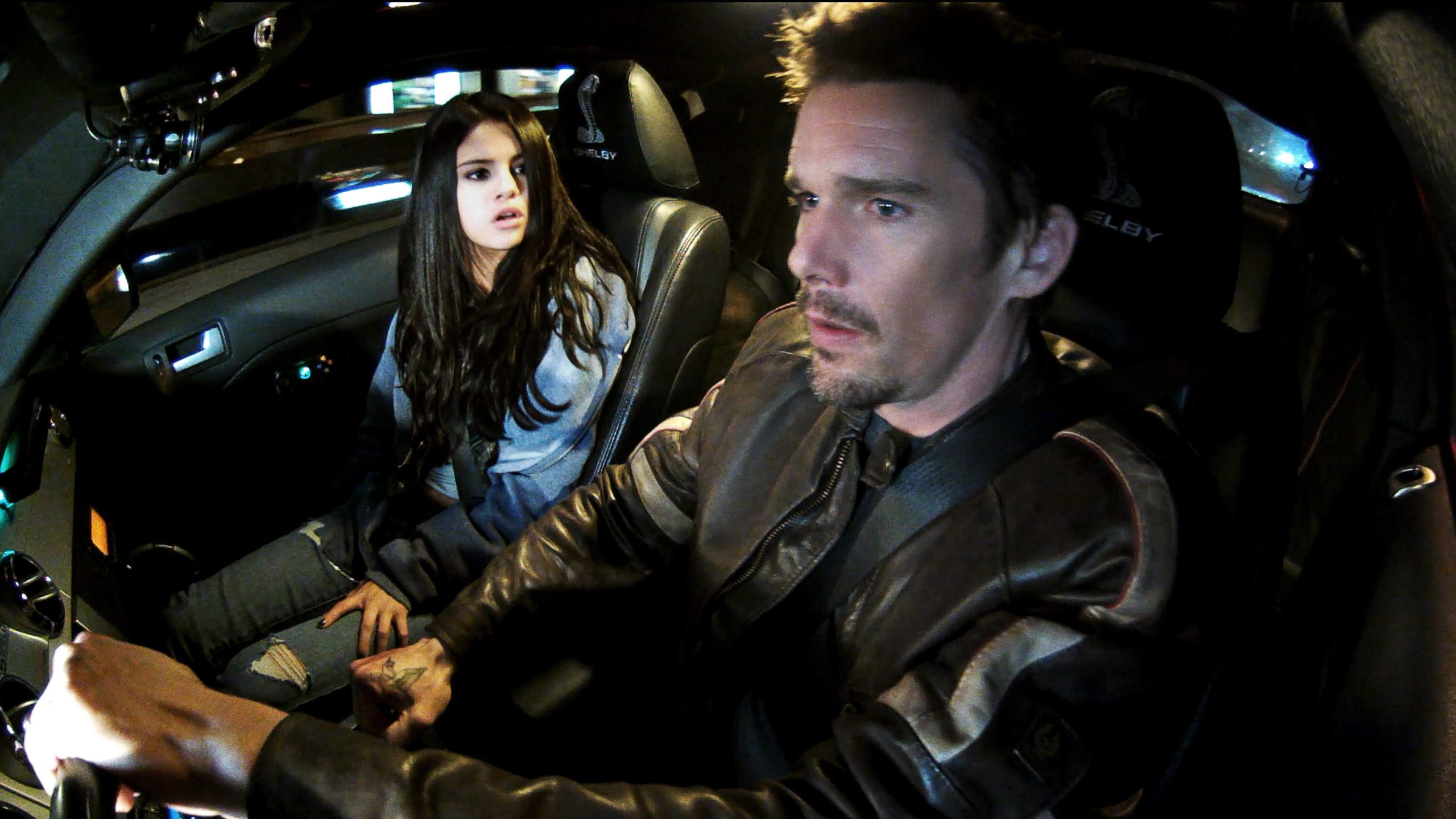
Plot and Analysis
“Getaway” follows former race car driver Brent Magna (Ethan Hawke), who is forced into a dangerous mission after his wife is kidnapped by a mysterious villain. Gomez’s character, known simply as The Kid, becomes an unlikely ally to Magna after an attempted carjacking brings them together. Armed with her hacking skills and quick thinking, The Kid becomes central to navigating the obstacles thrown their way, providing a tech-savvy edge to their attempts to outwit their antagonist.
The film’s narrative centers around a series of high-speed chases and elaborate car stunts set against the backdrop of a ticking-clock scenario. This relentless pace serves as both a strength and a challenge for the actors, requiring a level of intensity and physicality that adds a layer of authenticity to the suspense. Gomez’s role as The Kid allows her to showcase a different facet of her acting abilities, embracing the action-packed demands of the genre while maintaining a nuanced portrayal of her character’s vulnerability and resourcefulness.
Cultural Impact and Critical Reception
While “Getaway” struggled to resonate with critics and audiences, often criticized for its underdeveloped plot and reliance on car chase sequences at the expense of character depth, Selena Gomez’s performance was frequently cited as a highlight. Critics acknowledged her energy and commitment to the role, appreciating her effort to bring depth to a character in a film genre that often prioritizes spectacle over character development. Her portrayal of The Kid added a dynamic element to the film, with her character’s tech expertise and youthful perspective providing a contrast to Hawke’s more traditional action hero persona.
The film’s reception underscores the challenges inherent in the action genre, particularly when it comes to balancing adrenaline-fueled sequences with compelling storytelling and character arcs. However, Gomez’s participation in “Getaway” demonstrated her willingness to take on diverse and challenging roles, signaling a departure from the more youth-oriented projects that initially defined her career. This role exemplifies Gomez’s aspirations to push her boundaries as an actress, exploring new genres and character types.
Gomez’s Contribution and the Legacy of “Getaway”
Selena Gomez’s role in “Getaway” represents a significant step in her evolving career, showcasing her ability to adapt to the rigorous demands of action filmmaking. Her performance in the film, despite its overall reception, highlights her dedication and versatility, offering a glimpse into her potential for future roles in diverse genres. Gomez’s commitment to expanding her range as an actress is evident in her choice to participate in “Getaway,” embracing the challenge of a genre that requires a blend of physicality and emotional intensity.
The legacy of “Getaway,” particularly in the context of Gomez’s filmography, lies in its demonstration of her willingness to explore and inhabit roles outside of her established comfort zone. This film, along with her subsequent projects, underscores her journey as an actress unafraid to tackle a variety of characters and storytelling styles. Her performance in “Getaway” serves as a testament to her growth and ambition within the industry, highlighting her readiness to engage with complex characters and challenging narratives.

In reflecting on “Getaway,” it becomes clear that the film, despite its criticisms, played a crucial role in Gomez’s artistic journey. By stepping into the action genre, Gomez opened new avenues for her career, challenging perceptions of her capabilities as an actress and setting the stage for her future endeavors in cinema. Her role as The Kid in “Getaway” remains a notable point in her filmography, illustrating her capacity for versatility and her commitment to exploring the breadth of her talent in the diverse landscape of Hollywood filmmaking.
9.”The Fundamentals of Caring” (2016)
The Fundamentals of Caring,” a film that premiered in 2016, is a poignant exploration of human connection, grief, and the transformative power of care. Starring Paul Rudd, Craig Roberts, and Selena Gomez, this indie drama navigates the complexities of emotional healing through the unlikely friendships formed on a road trip. Gomez’s role as Dot, a hitchhiker with a blend of sharp wit and vulnerability, marks a significant departure from her earlier work, allowing her to delve into a character that embodies both strength and fragility. Through an in-depth analysis of the film’s narrative, thematic elements, and character dynamics, particularly focusing on Gomez’s performance, we can understand the impact “The Fundamentals of Caring” had on audiences and critics and its place within Gomez’s acting career.
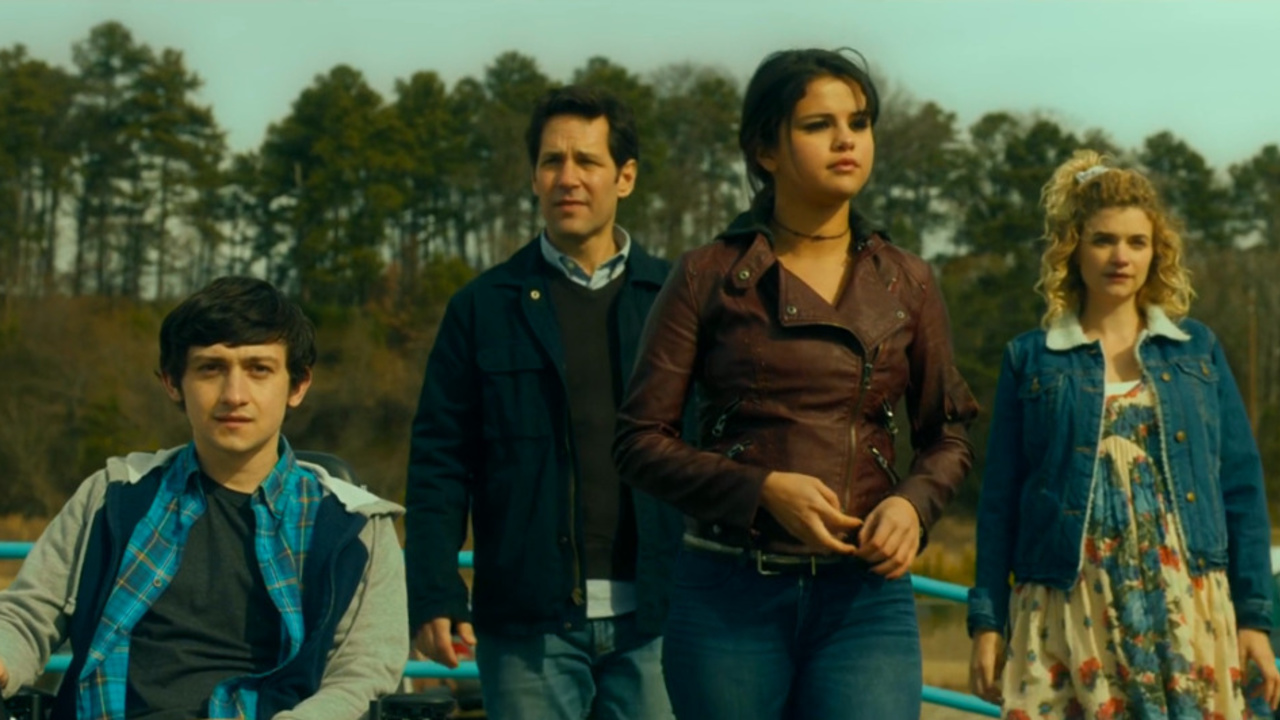
Plot and Thematic Exploration
“The Fundamentals of Caring” follows the journey of Ben (Paul Rudd), a writer turned caregiver, and his charge, Trevor (Craig Roberts), a young man with Duchenne muscular dystrophy. Their routine existence is upended when they decide to embark on a road trip to see the world’s deepest pit, a journey that leads them to cross paths with Dot (Selena Gomez). Dot’s introduction to the narrative injects a sense of spontaneity and audacity, challenging both Ben and Trevor to step out of their comfort zones and confront their fears and insecurities.
Dot’s character serves as a catalyst for much of the film’s exploration of grief, healing, and the complexities of human relationships. Her interactions with Trevor reveal a depth of understanding and compassion masked by her initially brash exterior. This dynamic underscores one of the film’s central themes: the importance of genuine connection and empathy in navigating the hardships of life. Gomez’s portrayal of Dot is critical in this regard, as she brings a nuanced understanding of her character’s journey, balancing humor with moments of poignant vulnerability.
Cultural Impact and Critical Reception
Upon its release, “The Fundamentals of Caring” garnered positive reviews from both audiences and critics, who praised the film for its heartfelt storytelling and compelling performances. The chemistry among the cast and the balance of humor and drama were highlighted as key elements that elevated the film beyond conventional indie drama. Critics and viewers alike lauded Gomez’s performance, noting how her role as Dot showcased a mature range and a significant evolution in her acting abilities.
Gomez’s portrayal of Dot was commended for adding a dynamic layer to the film, bringing both levity and emotional depth to the narrative. Her character’s journey, marked by moments of wit and vulnerability, resonated with audiences, offering a portrayal of a young woman navigating her own path of self-discovery and healing. This performance was seen as a testament to Gomez’s versatility as an actress and her capacity to engage with complex material, challenging previous typecasts and expectations.
“The Fundamentals of Caring” stands out within Gomez’s filmography as a project that allowed her to explore a more nuanced and layered character, diverging from the more youth-oriented roles of her early career. Her involvement in the film reflects a deliberate choice to engage with stories that speak to the human condition, emphasizing the themes of empathy, resilience, and the redemptive power of care.
Gomez’s Contribution and the Legacy of “The Fundamentals of Caring”
Selena Gomez’s role in “The Fundamentals of Caring” marks a pivotal moment in her career, showcasing her growth as an actor and her ability to convey a wide range of emotions. Her performance contributed significantly to the film’s impact, offering a portrayal that was both relatable and inspiring. Through Dot, Gomez explores the complexities of grief and healing, enriching the film’s narrative with her character’s perspective and experiences.
The film’s legacy, enhanced by Gomez’s performance, lies in its portrayal of the transformative effects of friendship and understanding. “The Fundamentals of Caring” resonates with audiences for its authentic exploration of the challenges and joys of caring for others and the unexpected journeys of self-discovery that can emerge from such relationships. Gomez’s role in this narrative serves as a reminder of the importance of compassion and the potential for growth in the face of adversity.

Reflecting on “The Fundamentals of Caring,” it becomes evident that the film, and Gomez’s involvement in it, occupies a special place in the landscape of indie dramas. Through her portrayal of Dot, Gomez demonstrates the depth of her acting capabilities, contributing to a story that touches on universal themes of love, loss, and the healing power of connection. Her performance in the film stands as a testament to her evolution as an actress, highlighting her commitment to roles that challenge and inspire, both on and off the screen.
10.”In Dubious Battle” (2016)
“In Dubious Battle,” directed by James Franco in 2016, stands as a significant cinematic endeavor to adapt John Steinbeck’s powerful novel of the same name. The film delves into the complexities of the labor movement in California, highlighting the human cost of social and economic injustice. Featuring an ensemble cast that includes Selena Gomez, the film attempts to capture the essence of Steinbeck’s exploration of solidarity, struggle, and dignity amidst adversity. Gomez’s role as Lisa, though not the central character, brings a deeply human perspective to the narrative, showcasing her growth as an actress and her ability to embody complex emotional landscapes.
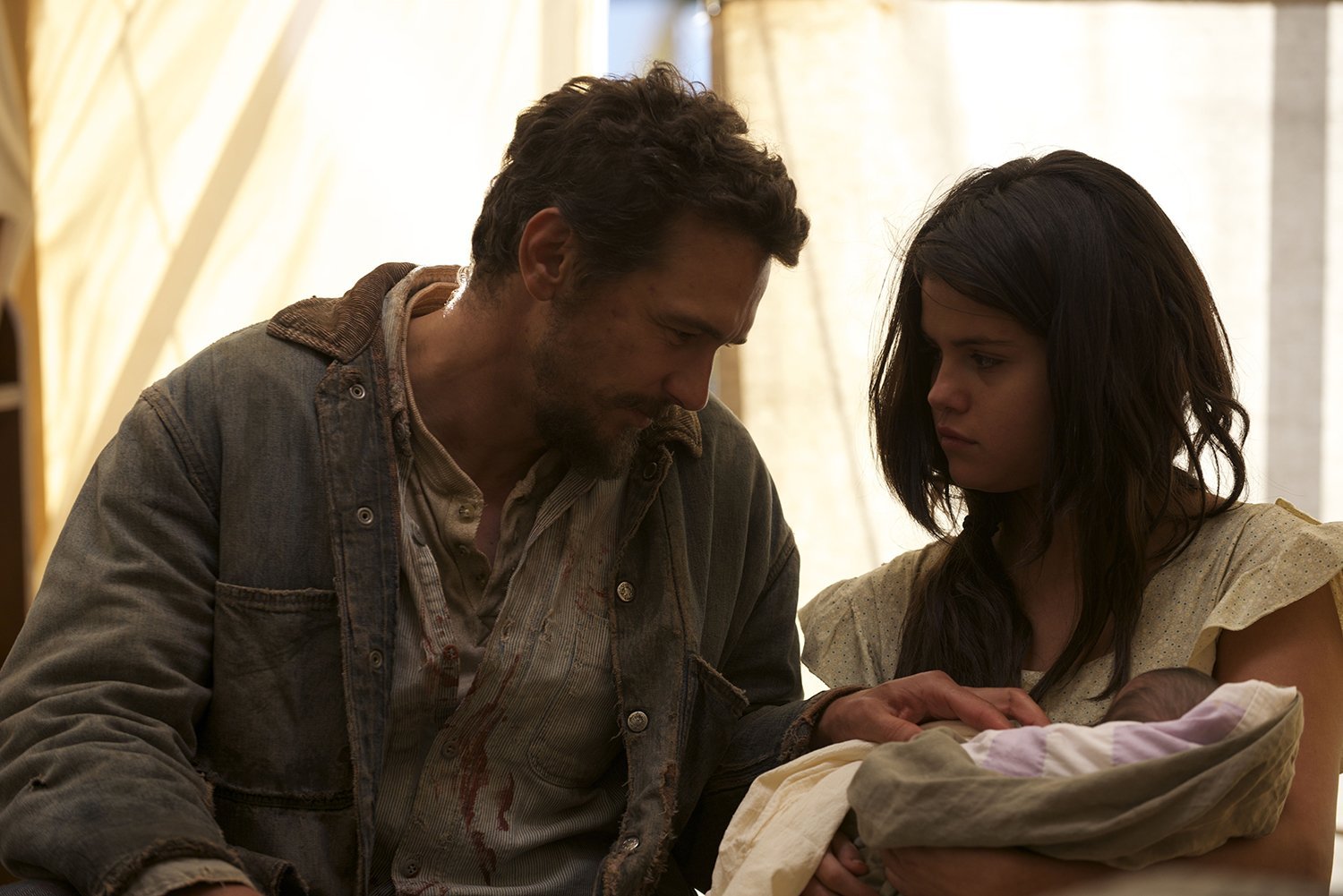
Plot and Thematic Exploration
Set against the backdrop of the 1930s labor movement in California, “In Dubious Battle” follows the story of Jim Nolan (Nat Wolff), an activist who becomes involved in organizing a major strike among fruit pickers, facing off against the oppressive landowners. Selena Gomez’s character, Lisa, is introduced as a young woman deeply affected by the harsh realities of the labor struggle. Her relationship with Jim and her personal journey throughout the strike serve as poignant windows into the lives of those caught in the crossfire of economic and social upheaval.
The film’s exploration of themes such as injustice, solidarity, and the fight for dignity resonates with contemporary audiences, drawing parallels to ongoing struggles for workers’ rights and social justice. Through its depiction of the strike, “In Dubious Battle” examines the complexities of human nature, the power of collective action, and the sacrifices individuals make in the pursuit of a greater good. Gomez’s performance as Lisa adds a layer of emotional depth to the narrative, highlighting the personal cost of such conflicts and the resilience of those who endure them.
Cultural Impact and Critical Reception
“In Dubious Battle” was met with mixed reactions from critics, who praised its ambition and the performances of its cast while critiquing aspects of its execution and faithfulness to Steinbeck’s original work. The film’s attempt to tackle the weighty themes of the novel was seen as a commendable effort, albeit one that struggled to fully capture the depth and nuance of Steinbeck’s narrative.
Despite the film’s mixed reviews, Selena Gomez’s portrayal of Lisa received positive attention for her ability to convey the character’s vulnerability and strength. Critics noted Gomez’s performance as a standout, commending her for bringing a sense of maturity and emotional complexity to her role. This role allowed Gomez to demonstrate her range as an actress, moving beyond the teen-oriented roles that initially defined her career and stepping into more challenging and nuanced territory.
Gomez’s contribution to “In Dubious Battle” is significant in that it showcases her willingness to engage with material that addresses serious social and historical issues. Her portrayal of Lisa serves as a reminder of the human stories at the heart of such struggles, offering audiences a glimpse into the personal sacrifices and dilemmas faced by those who stand up against injustice.
Gomez’s Contribution and the Legacy of “In Dubious Battle”
Selena Gomez’s role in “In Dubious Battle” represents an important milestone in her acting career, highlighting her capacity to engage with complex characters and themes. Her performance contributes to the film’s exploration of the labor movement, adding a personal dimension to the broader political and social commentary. Through Lisa, Gomez provides audiences with an emotional anchor amidst the turmoil of the strike, emphasizing the resilience and dignity of those who fight for justice and equality.
The film’s legacy, particularly in relation to Gomez’s career, lies in its attempt to bring Steinbeck’s examination of solidarity and struggle to a new generation. While “In Dubious Battle” may have received mixed reviews, its ambitious adaptation of such a significant work of American literature, combined with the efforts of its cast, including Gomez, underscores the importance of revisiting historical narratives to understand contemporary issues.

Reflecting on “In Dubious Battle,” it becomes evident that the film, through its themes and performances, contributes to ongoing conversations about social justice, workers’ rights, and the human capacity for collective action. Selena Gomez’s role in this narrative highlights her growth as an actress and her ability to navigate the complexities of human emotion and struggle. As such, her participation in “In Dubious Battle” stands as a testament to her evolving career and her commitment to roles that challenge, engage, and inspire.
Selena Gomez’s Evolution as an Actor
Over the years, Selena Gomez has demonstrated remarkable growth and versatility as an actor. From her early roles in family-friendly films to more complex characters in dramas and comedies, Gomez has continually expanded her range, challenging herself with diverse roles that showcase her depth and adaptability. Her ability to convey vulnerability, strength, humor, and complexity has earned her critical acclaim and a dedicated fanbase.
Gomez’s filmography reflects a conscious choice to explore a wide array of genres and themes, marking her evolution from a teen icon to a respected actor in Hollywood. Her performances in films like “Spring Breakers” and “The Fundamentals of Caring” reveal an artist unafraid to explore the darker and more nuanced aspects of human experience, while her roles in the “Hotel Transylvania” series and “Ramona and Beezus” highlight her enduring appeal to younger audiences and her flair for comedy and warmth.
As we reflect on Selena Gomez’s legacy in Hollywood, it’s clear that her influence extends beyond her roles on screen. Her willingness to take on challenging projects and her ability to resonate with a broad spectrum of viewers underscore her impact on contemporary cinema. Through her work, Gomez has not only entertained millions but has also sparked conversations about the themes and issues explored in her films, from the complexities of growing up and the search for identity to the importance of compassion and understanding in today’s world.
Selena Gomez’s career is a testament to her talent, hard work, and the diverse stories she has helped bring to life. As she continues to evolve as an actor, her legacy in Hollywood will undoubtedly be one of versatility, depth, and a unique ability to connect with audiences around the globe.









